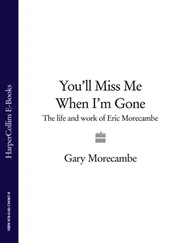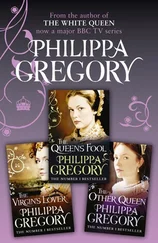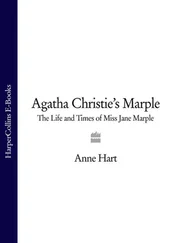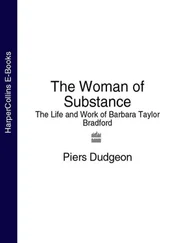1 ...8 9 10 12 13 14 ...19 Bartlet Green was burned the next month. Beyond his brief encounter with Dee, little is known about his last days, although he was brought into one of the final interrogations with Philpot to identify the incriminating letter. On 27 January 1556, he followed Philpot’s short journey from Newgate up Giltspur Street to his pyre which was still smouldering from the burning of Thomas Whittle the day before. Bartlet was only twenty-five years old.
The figure of Dee glimpsed through the pages of Foxe’s Acts and Monuments, of the ‘great conjuror’, Bonner’s ‘chaplain’, flitting in and out of interrogations, is a disturbing one. He was a favoured and apparently enthusiastic member of Bonner’s household. Indeed, the bishop had become his ‘singular friend’, and would remain so even into the late 1560s, when Bonner, stripped of his honours by Elizabeth’s Protestant government, lay dying in Marshalsea prison. 8 A note in one of his books also reveals that Dee was staying, perhaps even living, at Fulham Palace, the bishop’s Thameside residence four miles upriver, between 18 and 24 September 1555, the weeks leading up to Philpot’s interrogations. 9 Could Dee, so recently an enthusiastic member of Edward VI’s Reformist court, have been a closet Catholic?
The Reformation did not split the world between Catholicism and Protestantism quite as neatly as many historical accounts suggest. Militants on both sides were prepared to kill and die for their cause but the vast majority, including many of the Reformation’s leading figures, were much more ambivalent. Throughout his life, Henry VIII himself clung to many Catholic rites and attitudes, even those concerning divorce. His was primarily a struggle for power rather than religious principles. 10 Elizabeth I, a renowned symbol of Protestant sovereignty, told the French Ambassador André Hurault: ‘There is only one Jesus Christ… The rest is dispute over trifles.’ 11 This, it seems, was Dee’s view as well.
Dee always refused to commit himself to a particular religion, though it is certain he was not an orthodox Catholic. In 1568 – by which time England had reverted to Protestantism under Elizabeth – the Jesuit leader Francis Borgia received a secret report on the English Hospice in Rome. The hospice provided lodging for English pilgrims and later (as the English College) became a training camp for Catholic missionaries and spies. In the paper, probably written by the exiled Catholic militant Dr (later Cardinal) William Allen, a warning is issued to keep the hospice’s lodgers away from certain irreligious influences, including one ‘ Ioannes Deus, sacerdos uxoratus, magicis curiosisque artibus deditus’ (‘John Dee, a married priest, given to magic and uncanny arts’). 12 This curious note contains two pieces of information for which there is no other direct evidence: that Dee was ordained and married. Philpot’s reference during one of his interrogations to Dee being so ‘young in divinity’ suggests it could well have been Bonner himself who ordained Dee. This would explain the origin of the ‘Doctor’ title so closely associated with his name, for which Dee himself never publicly accounted. But as Catholic priests must remain celibate, the marriage must have come later. This was why the Jesuit report ordered the English hospice’s inmates to avoid him – it proved he had renounced Catholicism. Being connected with ‘magic and uncanny arts’ only compounded the sin. It represented pagan heresy and unorthodox scientific interests.
However, Dee could not be counted a committed Protestant either. Although he was very much a part of the Protestantism that defined Elizabeth’s reign (for example, when consulted by the government on the issue of Calendar reform, he openly criticised the Pope and ‘Romanists’), he became partial to Catholic rites in later life, and was comfortable among Catholic activists, such as Sir George Peckham, whom he advised about setting up a Catholic colony in the New World.
Such mixed messages left many of those that met him wondering where his loyalties lay. One correspondent of Francis Walsingham’s, who encountered Dee in Germany, was so befuddled by Dee’s theology, he concluded that the philosopher must have ‘disliked of all religions’. 13
In fact Dee’s diaries are filled with heartfelt expressions of piety, including accounts of lengthy sessions of anguished prayer and supplication conducted in his own private chapel. But he refused to accept that either Protestants or Catholics, the Bible or the Pope had the monopoly. He believed that God’s truth was also to be found in nature and in learning. It was to the movements of the stars and to ancient texts that humanity must look to find the common ground upon which the Christian Church had originally been built. Only on Peter’s Rock, the long lost foundation of faith, could the ‘first beginning of unity’ proclaimed by St Cyprian – and reiterated by Dee during Philpot’s interrogation – be restored.
This was his theology, a religion founded on ancient principles and confirmed by science, and his behaviour following his arrest was, as subsequent events were to show, aimed at its fulfilment.
Following his brush with Bartlet Green and John Philpot, Dee appeared very much at home in the new Catholic order. On 15 January 1556, only a few days before Green’s execution, he published his ‘Supplication to Queen Mary….for the recovery and preservation of ancient writers and monuments’. The ‘monuments’ to which he referred were not the statues smashed by Protestant radicals in churches and monasteries, but the far more precious ancient and medieval manuscripts currently shelved in vestries and scriptoria. The tempest of the Reformation had already scattered many of these irreplaceable pages. ‘There was no quicker merchandise than library books,’ John Bale later observed of the period, noting that bundles of them were routinely to be found for sale in ‘grocers, soapsellers, tailors, and other occupiers’ shops, some in ships ready to be carried overseas into Flanders’. 1 If action was not taken quickly, England’s fragile intellectual infrastructure would be gone forever.
Dee’s plan was to send agents across the length and breadth of the country to collect or copy these works for a new ‘Library Royal’. This great national archive would not only preserve manuscripts and books from ‘rot and worms’, but provide a resource to which ‘learned men’ could turn in times of religious strife and uncertainty to settle ‘such doubts and points of learning, as much cumber and vex their heads’. For there they would find, Dee argued, that all the most troubling issues of the day – for example the true meaning of St Cyprian’s words concerning the unity of the church, the subject of Dee’s heated argument with Philpot – ‘are most pithily in such old monuments debated and discussed’. 2 Thus would ‘learning wonderfully be advanced’.
Although his scheme did not receive official backing, it provided Dee with a pretext for pursuing his own private version. A period of frenetic bibliographic activity followed. Dee criss-crossed the country, searching for material, keeping notes as he went:
Remember two in Wales who have excellent monuments. Mr Edward ap Roger in Raubon 7 miles from Oswestree Northward and…Edward Price at Mivod X [i.e. ten] miles from Oswestree, somewhat westwards. Archdecon Crowly and Robert Crowly sometime printer had Tully’s translation of Cyropaedia… 3
Dee’s desire to preserve and own these texts pushed him to extreme measures. He borrowed four scientific manuscripts from Peterhouse College in Cambridge, promising to return them but apparently failing to do so. He acquired six manuscripts from the collection of John Leland within days of its supposed custodian, Sir John Cheke, being kidnapped in his exile in the Low Countries, brought home and forced to renounce his Protestantism. 4
Читать дальше












